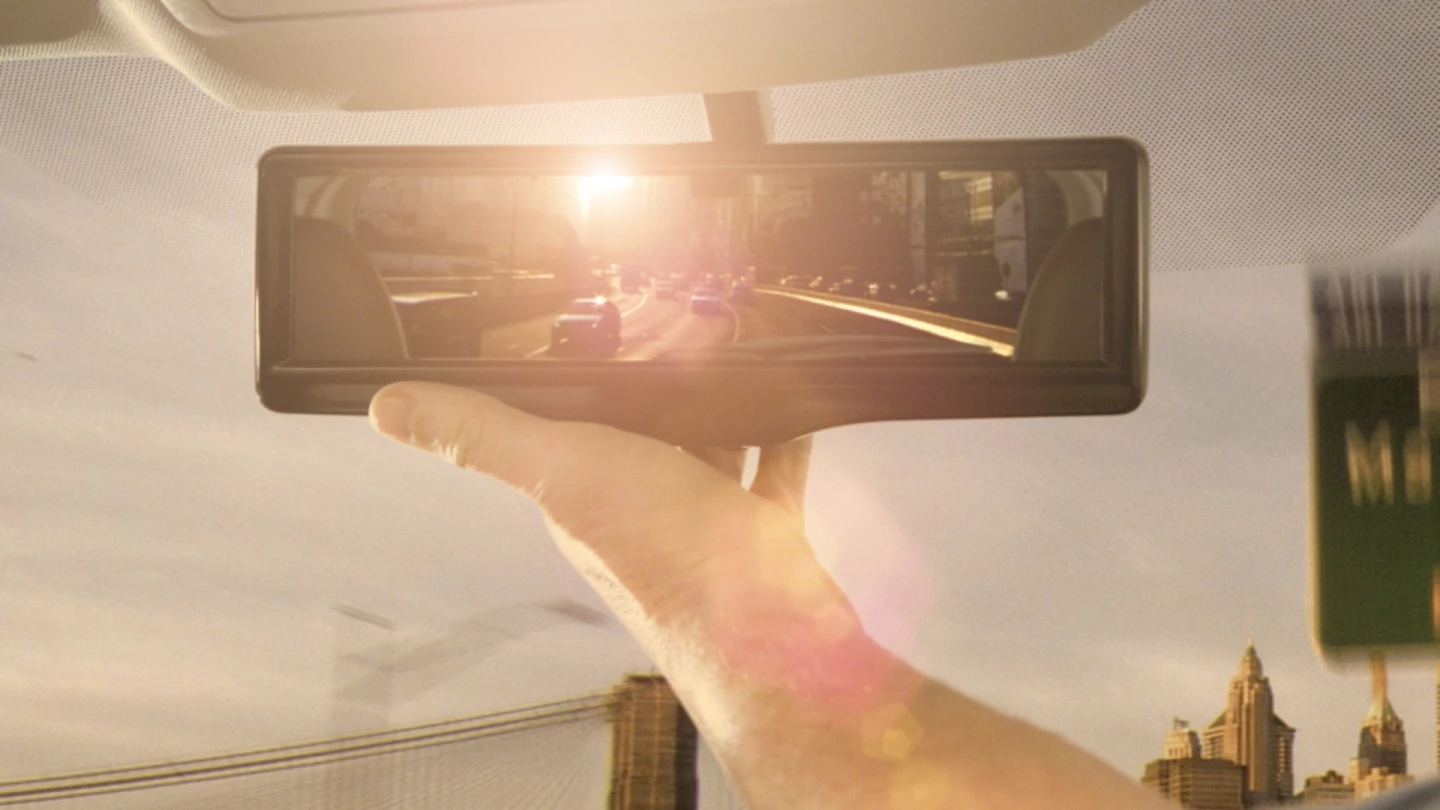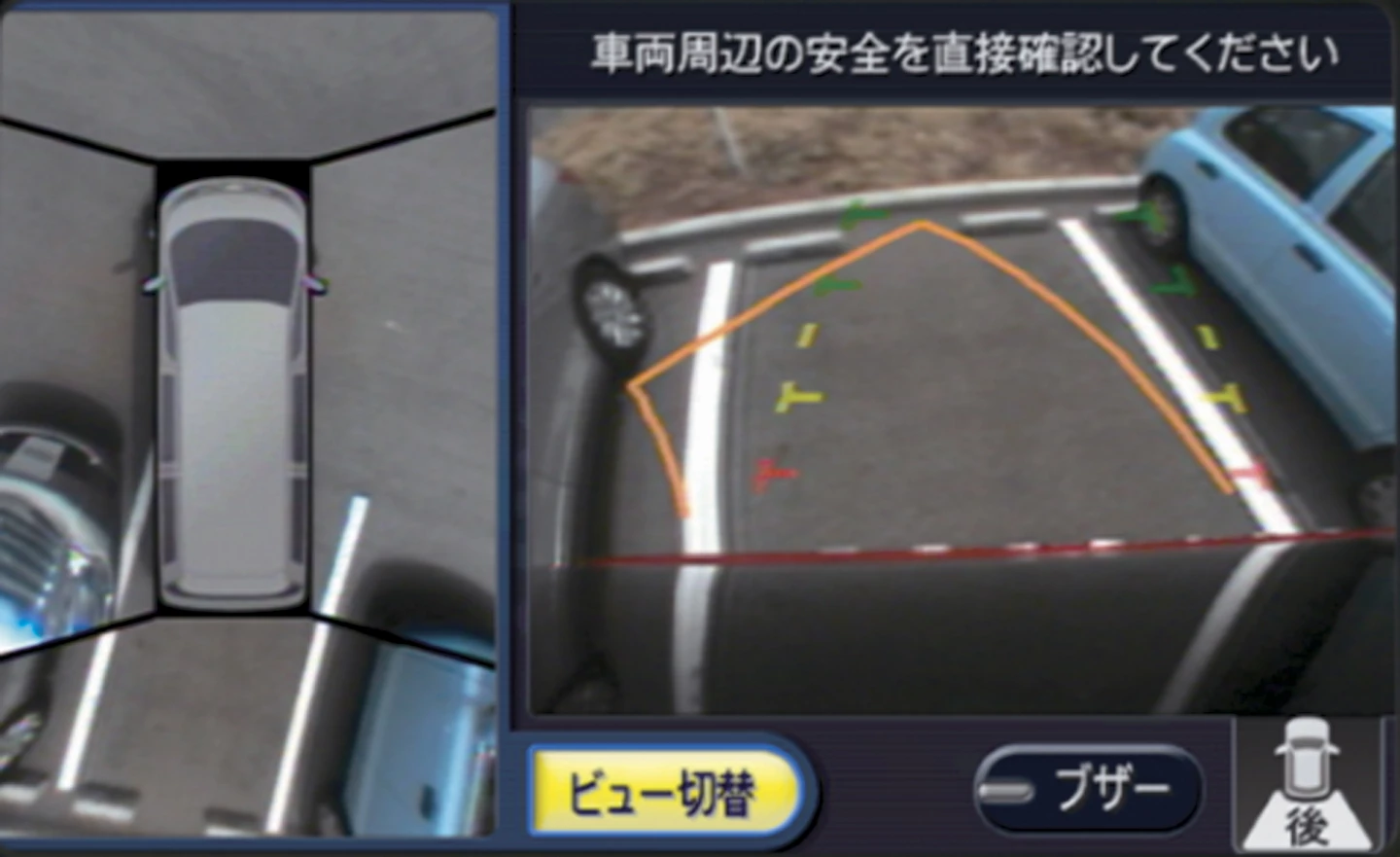Nissan has announced the commercialization of a new type of driver rear visibility system that integrates a wide-aspect, hi-res LCD monitor with image processing into the traditional rearview mirror. With the system switchable between mirror and LCD modes, the big advantage of the "smart" mirror is that in LCD mode, it can provide an unobstructed rear view without blind spots, and an enhanced picture in difficult conditions.
In conditions where glare is a problem, such as dawn, dusk and with a tailing car with headlights on high beam, the image processing software can provide a clearer picture by modifying the image. Similarly, in low contrast situations such as rain and snow, the image processing also provides clearer visual information to the driver, as well as overcoming the issues of a wet, clouded or dirty rear window.
Nissan plans to introduce the Smart rearview mirror to the Japanese market as an option over the next few months, with a global roll-out planned for 2015. We'll get to see the "smart mirror" system in action for the first time next week at the Geneva Motor Show.

One of the key advantages of the LCD mirror, which provides images from a high-resolution camera mounted above the rear window, is that it offers an unobstructed view of the rear flanks without any blind spots.
Nissan recognizes that driving is a sight-response activity

Driving is a sight-response activity. Nearly all the information with which a driver makes decisions when driving, is visual, and Nissan has long been a strong proponent of better visual information systems for the driver.
It was the first manufacturer to provide a comprehensive information system for parking with its birds-eye view and for 360 degree situational awareness with its Around View Monitor.
Nissan's focus on combining digital cameras and image processing technologies to better inform the driver has been a highlight of its active safety R&D and the benefits will have significant roll-on effects for the marque, not the least of which will be great design freedom for the entire car in the longer term.

Parking has long been a problem area for human drivers, and the ingenious combination of the output of four corner-mounted cameras into a bird's eye view of a vehicle's surroundings, was one of the highlights of the 2007 Tokyo Motor Show.
The Around View Monitor system has evolved considerably since Nissan first allowed me to experience this virtual 360-degree image of the vehicle in the car park of Makkuhari Messe in Chiba in 2007.
From its initial introduction, the system evolved to provide more useful information in easily-comprehended visual form with a Front Wide View Function and Rear Wide View Function.
When a driver needs to perform a blind corner turn, or when exiting a car park, the system can provide a 180-degree view of the front and back of the vehicle on the monitor inside the car.
Moving Object Detection (MOD) was subsequently added, and this informs the driver of moving objects detected near the car when maneuvering out of a parking space.

The cameras have also contributed other safety technologies, including the Lane Departure Prevention system, which alerts the driver when the car unintentionally leaves the driving lane. Given the epidemic of distracted driving precipitated by the proliferation of the smartphone, the technology is making it safer not just for Nissan drivers, but for all road users.
The camera systems have also been instrumental in the development of Nissan's Emergency Brake System, which detects a car in front of the vehicle and alerts the driver with an in-vehicle audible and visual warning and if necessary, emergency brake is applied to help avoid an imminent collision. That was another technology I previewed in that Chiba car park in 2007.
The Smart rearview mirror is equipped with a newly developed high-performance, narrow-angle camera and a specially-shaped LCD monitor. Matching a standard wide angle camera lens to this unique monitor could not be done since the images from the camera, when adjusted to the special monitor size, produced a low-resolution image resulting in an insufficient picture quality. To rectify this challenge, a 1.3 megapixel narrow-angle camera was developed so that picture quality would not be sacrificed when formatted for the specially designed monitor.

Also, conventional monitors possess an aspect ratio of 4:3 or 16:9, but these traditional-sized aspect ratios could not adequately be displayed in a rearview mirror. Therefore, an LCD monitor with a unique aspect ratio of approximately 4:1 was developed.
When the LCD monitor and mirror are used in unison, the transparency of the monitor and the reflection in the mirror can create an image overlap ─ a dual layered effect-making it difficult to get a clean view, but with the Smart rearview mirror, Nissan applied a unique technology to the structural design of the LCD monitor and the mirror, enabling it to function without any image overlaps.
Flow-on effects of the smart mirror will influence Nissan vehicle design
Automobile designers have long been hampered by the need for an unobstructed view for the rear vision mirror in creating aesthetic and aerodynamic vehicles. The development of the smart mirror might well give Nissan a competitive edge in the design area in the future as blind spots will no longer be a factor.

Nissan will deploy the new mirror in its race cars this year, and is planning to use it in the ZEOD RC and other NISMO race cars at the Le Mans 24 Hour race in June.
"Under the harsh driving conditions in the world of motorsport, retaining a clear view for the race driver is of utmost importance", said NISMO president, Shoichi Miyatani.
"In that sense, the Smart rearview mirror will be a powerful tool for our Nissan NISMO drivers. Also, we have high expectations towards improving the cars' aerodynamic design, thanks to the Smart rearview mirror, thereby expanding the possibilities of race cars to a new level."
Several major accidents have been caused in the Le Mans race by slower cars in the GT categories failing to see fast-closing LMP1 and LMP2 cars (the speed differential between the classes is stark), and this might be a significant racing safety of the future.
Regardless of what happens on the racetrack, the new smarter rear vision system in conjunction with the Around View Monitor, Front and Rear Wide View function, and Moving Object Detection adds up to an unquestionably safer vehicle.
This is an important new safety feature and Nissan now has a unique selling feature which will impact buyer decision making. For those who regularly see the family fleet dented or damaged by less-than-skillful drivers, this is also a feature which will be worthwhile.
And for Nissan, perhaps it could further enhance the surround camera system with the facility to take video whenever the car is parked in the street, supermarket car park ad infinitum. If the car is bumped or tampered with, the video could be transmitted to the driver's smartphone. Number plate detection software would help too.





















